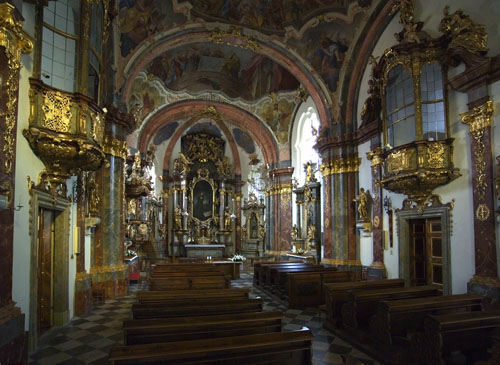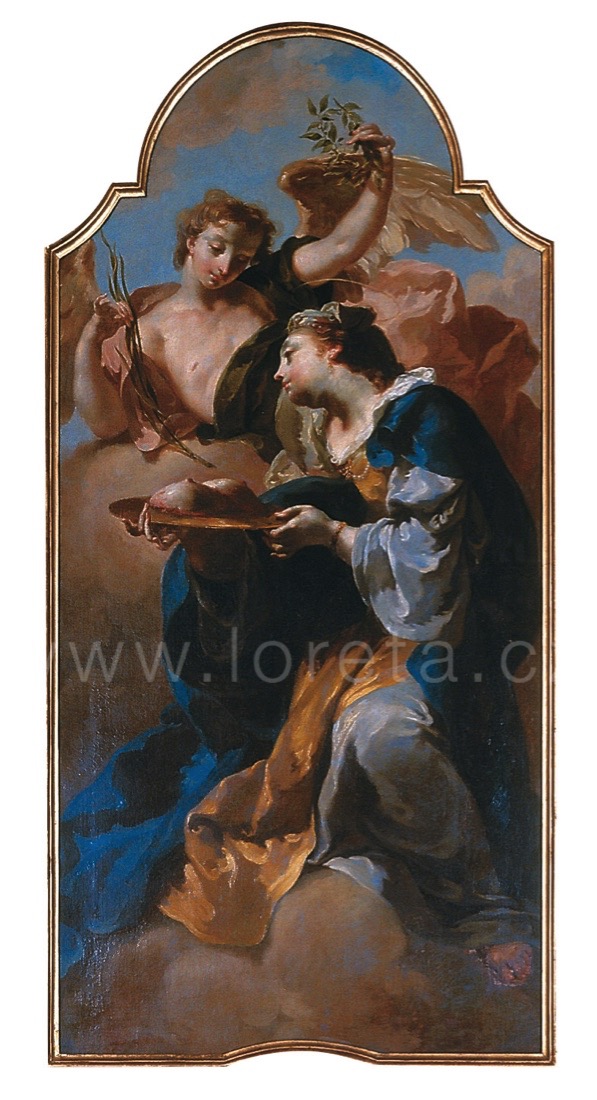The Dientzenhofers - an important family of architects - had an impact on the building development of the Prague Loreto in the first half of the 18th century. Christoph Dientzenhofer began the two-phase reconstruction of the church and designed the western facade of the entire complex, which was finished, after his death in 1722, by his son Kilian Ignaz, with minor alterations. The latter is also the author of the design of the terrace with balustrades in front of the facade. In 1735, Christoph’s stepson, J. G. Aichbauer, finished the final reconstruction of the church, financed (as was most of the interior decoration) by Countess Maria Margarethe Waldstein, née Czernin von Chudenice.
It was consecrated on 7 June 1737, but work on the interior continued until the end of 1738. The principal altar is decorated with an alleged replica of a Renaissance painting of the Adoration (perhaps from the circle of F. Lippi), with a wrought rocaille frame and sculptures of SS Joseph, Joachim, God the Father and the angels, by M. Schönherr (1701-1743). The two side altars of St Felicissimus and St Marcia, with the large reliquary display cases, are located in the chancel.
The side altars in the nave have superb Rococo paintings of St Apollonia and St Agatha, by Anton Kern (1709-1747), supplemented at the sides by equally impressive sculptural pairs of cherubs by Richard Prachner.
The original organ by the master L. Spiegel, provided at the expense of Countess Eleonore Caroline von Lobkowitz in 1718, was replaced between 1734-38 by a new instrument by the masters F. Katzer and K. Weltzer from Králíky. The frescoes of the Nativity of Our Lord and the Adoration of the Magi are the work of J. A. Schöpf (1702-1772); they are inferior to the painting in the third vaulting field above the chancel, with the scene of the Presentation of Christ in the Temple, by W. L. Reiner (1698-1743).




